Mastering Wilderness Navigation: Skills for Outdoor Enthusiasts Without GPS
Wilderness Navigation without modern technology can initially appear overwhelming. However, acquiring the fundamental map and compass navigation skills is an invaluable asset that can significantly enrich your outdoor adventures. At its essence, navigating involves a keen understanding of your surroundings and accurately determining your position in relation to your intended destination. A map acts as a two-dimensional representation of the landscape. At the same time, a compass offers a reliable method for orienting yourself according to the cardinal directions: north, south, east, and west. Mastering these tools allows you to explore the great outdoors, regardless of technological reliance, confidently.
Begin your journey by familiarizing yourself with the various symbols and scales on a map; these elements are crucial for effectively interpreting the physical landscape. Understanding how to read contour lines denoting elevation changes is essential for identifying hills, valleys, and other geographical features that may impact your route. Additionally, learning to utilize a compass proficiently is equally crucial. It will empower you to navigate effectively in the wilderness without the aid of GPS.
The compass needle consistently points toward magnetic north, enabling you to align your map with the real-world terrain. Hold the compass flat in your hand and rotate the map until the magnetic north aligns with the north indicated on the map. This crucial process, “orienting the map,” is fundamental for maintaining accuracy in your navigation efforts.
Once your map is correctly oriented, you can use the compass to take bearings, which will guide your direction of travel. By effectively combining these two powerful tools—map and compass—you can navigate with confidence through unfamiliar terrain, ensuring that you stay on course even in the absence of modern technology.
Essential Insights for Outdoor Navigation
- The map and compass navigation skills are foundational for anyone engaging in wilderness travel or outdoor activities.
- Topographic maps provide intricate details about an area's terrain, elevation, and natural features, vital for successful navigation.
- A compass establishes direction and helps one navigate effectively by aligning with the map's orientation and understanding magnetic north.
- Natural landmarks and signs, such as unique rock formations or specific tree patterns, can effectively guide you without a map or compass.
- Estimating distance and travel time is crucial for planning and executing a successful navigation route in the wilderness.
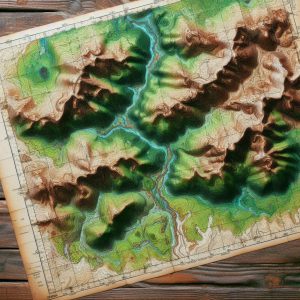 Unlocking the Secrets of Topographic Maps
Unlocking the Secrets of Topographic Maps
Topographic maps are indispensable for anyone planning to venture into the wilderness. They offer detailed information regarding the physical features of the terrain. They utilize contour lines to depict changes in elevation, enabling you to visualize the shape and steepness of the landscape. Each contour line connects points of equal elevation, with the spacing between these lines indicating how steep or gradual a slope may be. Thus, you can prepare adequately for the challenges ahead.
Deciphering Contour Lines and Map Symbols
As you delve into a topographic map, pay close attention to the patterns created by contour lines; closely spaced lines signify steep terrain, while widely spaced lines indicate flatter areas. This knowledge will equip you to anticipate potential challenges along your route and make informed decisions about where to navigate. In addition to contour lines, topographic maps are filled with symbols representing various landmarks, including rivers, roads, trails, and vegetation types. Familiarizing yourself with these symbols is essential for effective and successful navigation.
Effective Navigation Using Topographic Maps
For example, blue lines typically indicate bodies of water, such as streams or lakes, while green areas may symbolize forests or dense vegetation. Cross-referencing these symbols with your physical surroundings allows you to confirm your position and adjust your route as needed. Moreover, topographic maps often feature grid lines that can assist you in pinpointing coordinates for even more precise navigation. By mastering the complexities of topographic maps, you will gain a deeper appreciation for the landscape and enhance your navigational skills in the great outdoors.
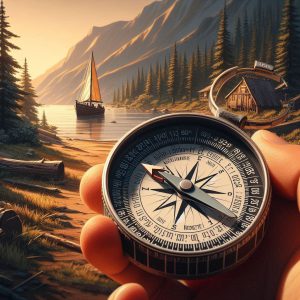 Essential Techniques for Directional Navigation with a Compass
Essential Techniques for Directional Navigation with a Compass
A compass is essential for anyone seeking to navigate directionally, especially when traversing unfamiliar landscapes. To utilize a compass effectively, start by holding it level before you and allowing the needle to settle. The needle will indicate magnetic north, which differs slightly from true north due to magnetic declination—the angle between magnetic north and true north is variable based on your geographical location.
Before setting off on your journey, it is crucial to determine the local declination and adjust your compass accordingly. This adjustment guarantees that your bearings remain accurate, helping you stay on course throughout your adventure. Once your compass is calibrated for declination, you can take a bearing to guide your travel.
To take a bearing, identify a landmark where you wish to proceed and rotate the compass housing until the orienting arrow aligns with the magnetic needle. The number on the compass dial that aligns with the index line represents your degree bearing. As you advance toward your destination, periodically check your bearing to ensure you remain on track.
If you happen to stray off course, reorient your compass and refine your path as necessary. Mastering these techniques will empower you to rely on a compass as a dependable navigational aid.
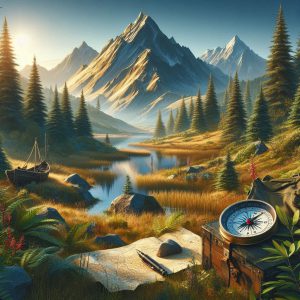 Utilizing Natural Landmarks and Signs for Navigation
Utilizing Natural Landmarks and Signs for Navigation
While maps and compasses are crucial tools for navigation, observing natural landmarks and signs can significantly enhance your ability to find your way in the wilderness. Notable features such as mountains, rivers, or distinctive trees can serve as invaluable reference points when navigating unfamiliar terrain. For instance, if you know that a specific mountain lies east of your starting position, you can use it as a guide to ensure you're heading in the correct direction.
Moreover, familiarizing yourself with the unique characteristics of the landscape will help you create mental maps that can facilitate navigation without relying exclusively on tools. Besides prominent landmarks, be mindful of natural signs that can indicate direction or changes in terrain. The sun's position can be a helpful guide; in the northern hemisphere, the sun rises in the east and sets in the west, providing a general sense of direction throughout the day.
Additionally, observing moss growth on trees—often denser on the north side—can provide valuable clues about orientation in thick forests. Animal trails can also indicate direction; many animals follow established paths that may lead you toward water sources or other significant landmarks. You'll become increasingly adept at navigating diverse environments by honing your ability to interpret these natural signs.
Calculating Distance and Travel Time for Effective Navigation
Estimating distance and travel time is essential for effective navigation in the wilderness. Understanding how far you've traveled and how long it will take to reach your destination allows you to plan effectively and avoid unexpected challenges. One practical method for estimating distance is pacing—counting your steps as you walk.
On average, an adult's stride length measures around 2.5 feet, which means by counting your steps over a known distance and calculating accordingly, you can estimate how far you've traveled based on your pace. Additionally, terrain type and elevation changes should be considered when calculating travel time. For example, traversing flat ground typically allows for faster movement than navigating steep hills or rocky paths.
A comstandardideline suggests estimating that you'll cover approximately three miles per hour on flat terrain, but this estimate should be significantly reduced when faced with challenging landscapes. By considering these variables and adjusting your expectations accordingly, you'll be better equipped for your journey and capable of managing your time effectively.
Strategizing Your Wilderness Route and Navigation Plan
Designing Your Wilderness Route
Creating an effective navigation plan is crucial before embarking on any wilderness adventure. Begin by studying topographic maps of the area you intend to explore and identifying potential routes based on prominent landmarks, existing trails, and accessible water sources. When devising your route, consider factors such as elevation changes and the difficulty level of the terrain, ensuring your plan is realistic and achievable.
Preparing for Unforeseen Circumstances
As you plan your route, consider alternative paths if you encounter unexpected obstacles or changes in weather conditions. Multiple options will provide greater flexibility during your journey and help maintain your safety. This adaptability is key to a successful and enjoyable wilderness experience, allowing you to navigate challenges that may arise.
Creating a Comprehensive Navigation Plan
Once you've mapped out potential routes, develop a detailed navigation plan that includes critical waypoints. Mark these waypoints on your map and, if possible, note their coordinates, enabling you to track your progress as you navigate the wilderness. Additionally, factor in estimated travel time between waypoints and any potential hazards you may encounter along your chosen route.
Ensuring a Safe and Fulfilling Outdoor Experience
Planning thoroughly and anticipating challenges will enhance your chances of reaching your destination while enjoying a safe and fulfilling outdoor experience. A well-structured navigation strategy is essential for a successful wilderness adventure, guaranteeing that you can confidently explore the great outdoors.
 Emergency Navigation Techniques for Unexpected Situations
Emergency Navigation Techniques for Unexpected Situations
Even with meticulous planning and preparation, unforeseen circumstances can arise during outdoor adventures that may necessitate emergency navigation techniques. One essential skill is knowing how to perform a backtrack; if you find yourself lost or disoriented, retracing your steps can often lead you back to familiar territory. To do this effectively, pay close attention to distinctive landmarks or features along your route that can serve as reference points when returning.
Another valuable technique is celestial navigation, which can be particularly useful when visibility allows it—especially at night or during clear days when stars or other celestial bodies are observable. Familiarize yourself with prominent constellations, such as the North Star (Polaris) in the northern hemisphere, which remains relatively fixed in position while other stars shift. By locating Polaris and determining its angle above the horizon, you can establish true north, even without a compass or map.
Furthermore, suppose you have a watch or smartphone as a backup. In that case, utilizing it with celestial navigation can reinforce your sense of direction during emergencies, ensuring you remain oriented even in challenging situations.
Enhancing Your Wilderness Navigation Skills: Practical Tips
Improving your wilderness navigation skills requires commitment and practice, but the rewards can significantly enhance your outdoor experiences. One effective method for developing these skills is by joining local hiking groups or outdoor clubs, where members share their knowledge and experiences related to navigation techniques. Engaging with seasoned navigators can offer valuable insights into best practices while providing hands-on learning opportunities in diverse terrains.
Another helpful strategy is regularly practicing using maps and compasses in various environments—urban settings or remote wilderness areas—to build confidence in your abilities. Dedicate time for solo excursions where you intentionally navigate without relying on technology; this approach will reinforce your skills while allowing you to connect more profoundly with nature. Additionally, consider maintaining a navigation journal, documenting routes taken, challenges encountered, and lessons learned during each adventure; this reflective practice will enhance your skills and deepen your appreciation for navigating diverse landscapes.
By embracing these techniques and continuously refining your skills in map reading, compass usage, natural observation, distance estimation, route planning, emergency strategies, and sharing practical experiences with others, you'll evolve into a more self-assured navigator capable of thriving in any wilderness setting, even in the absence of technology.
Frequently Asked Questions About Wilderness Navigation
What does wilderness navigation entail?
Wilderness navigation determines and maintains a route through natural, often remote, and undeveloped areas. It involves employing various tools and techniques to stay on course and reach a desired destination safely.
What traditional methods are used for wilderness navigation?
Traditional methods of wilderness navigation include utilizing a map and compass, interpreting topographic features, observing natural landmarks, and employing celestial navigation techniques using the sun, moon, and stars.
Why might someone choose to navigate without GPS?
Many individuals opt to navigate without GPS for several reasons, including the desire to enhance their wilderness navigation skills, enjoy the challenge of traditional methods, or prepare for potential GPS failures or lack of access to technology.
What advantages exist in learning wilderness navigation without relying on GPS?
Learning wilderness navigation techniques without GPS can help one gain a deeper understanding of the natural environment, increase self-reliance and confidence, and offer a backup plan in case of technology failures or limited access to GPS devices.
What challenges may arise when navigating in the wilderness without GPS?
Challenges associated with wilderness navigation without GPS include the necessity for advanced planning, the potential for human error, and reliance on environmental conditions such as weather and visibility.
Survival Poncho Guide: Essential Tips for All Climates
Selecting the Perfect Survival Poncho for Your Needs Understanding Materials and Ensuring Durability Survival Poncho Guide: When choosing the right material for your survival poncho, consider both longevity and effectiveness in challenging situations. Survival ponchos are typically made from a range of materials, such as nylon, polyester, and PVC, each offering distinct levels of durability and waterproofing. […]
Wilderness Fire Safety: Essential Tips and Techniques
Mastering Wilderness Fire Safety Fundamentals What Are the Primary Sources of Wilderness Fires? Wilderness Fire Safety: Wilderness fires can ignite from numerous sources, which are mainly divided into natural and human-induced factors. Among natural causes, lightning strikes are particularly notorious for igniting dry vegetation, especially in remote, arid regions. Under optimal weather conditions, these fires […]
Map Reading Skills: Essential Techniques Unveiled
Mastering the Essential Aspects of Map Reading Decoding Map Symbols for Effective Navigation Map Reading Skills: Effectively reading a map relies heavily on your ability to decode map symbols. These symbols represent a variety of both natural and artificial features, providing vital information essential for navigation and exploration. A thorough understanding of these symbols not […]
Survival Compass Guide: Essential Tips for Navigation
Mastering Compass Navigation: Essential Knowledge and Techniques What is a Compass and Its Importance? Survival Compass Guide: A compass is an indispensable navigational tool that enables individuals to ascertain direction in relation to the Earth's magnetic poles. This device typically features a magnetised needle that consistently points towards magnetic north, facilitating orientation in unfamiliar terrains. […]

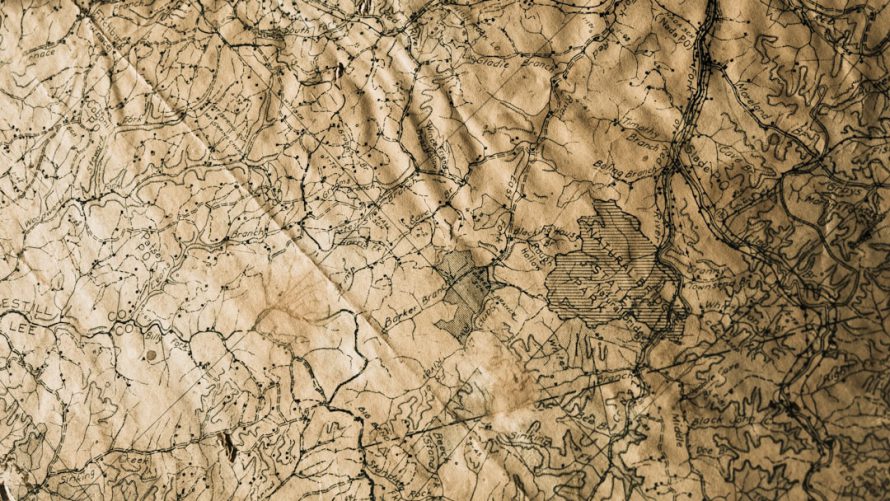
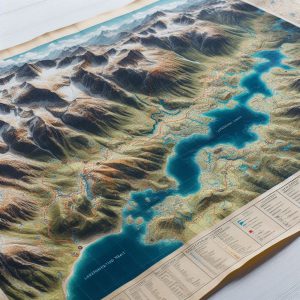
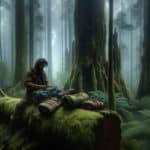
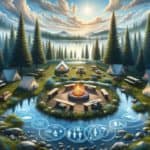
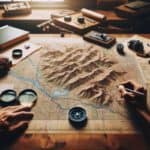



This is such a refreshing take on wilderness navigation! I remember my first solo hike in the mountains, where I relied solely on a paper map and a compass. It felt daunting at first, but as I learned to read the terrain and track my route, I gained a deeper connection to the landscape around me.
Your experience with the paper map and compass resonates deeply. There’s something truly profound about the learning curve associated with navigating the wilds without the crutch of technology. That initial sense of being lost—both literally and metaphorically—can lead to a more intimate appreciation of the environment.
I completely agree with you about the profound nature of using a paper map and compass. There’s a certain magic in the way those tools force you to engage with your surroundings. I remember my first experience of navigating in the wild—feeling the weight of the map in my hands, the slight tremor of the compass needle, and how every turn felt like a new discovery. It was humbling in a way that no GPS could replicate.
I completely resonate with what you’re saying about the magic of using a paper map and compass. There’s something inherently tactile and intentional about the process. I remember my first solo hike, the moment I unfolded the map felt like stepping into a new world, each contour and mark holding potential adventures.
Your experience truly captures the essence of what makes navigating with a paper map and compass so special. There’s something inherently tactile about handling a physical map—the feeling of unfolding it, the rustle of the paper as you find your bearings, and the way it invites you to explore every crease and mark. It’s an invitation to truly look at where you are and where you’re going, something that a digital screen just can’t provide.
I completely agree with you; there’s something uniquely grounding about stepping away from technology and relying on a map and compass. I remember my first solo hike; I had this mix of excitement and anxiety as I navigated through a dense forest. There was that disorienting moment where I thought I had lost my way, and instead of panic, I found myself taking a deep breath, absorbing the sounds and scents around me—like the crunch of leaves underfoot and the distant calls of birds.
I completely understand where you’re coming from; embracing those classic skills of navigation really deepens our connection with nature, and this piece dives into invaluable bushcraft techniques that enhance self-reliance in the wild.
‘Bushcraft Skills for Survival and Self-Reliance Explained’
https://survivalbite.com/bushcraft-skills-for-survival-and-self-reliance-explained/.
Your experience really highlights the beauty of disconnecting from technology and immersing ourselves in the raw elements of nature. That mix of excitement and anxiety is such a familiar feeling for many of us who venture into the wild. It’s fascinating how those moments of uncertainty can prompt us to engage more deeply with our surroundings. Just pausing to absorb the sounds and scents can help anchor us, creating a richer experience.
It sounds like you had quite the adventure on your solo hike! That blend of excitement and anxiety is so relatable; it’s like a rite of passage for many outdoor enthusiasts. When we step away from our gadgets, the world feels different—almost alive in ways we don’t usually notice. I love how you mentioned observing the sounds and scents around you. It’s amazing how those simple experiences can ground us and provide clarity.
Your experience resonates with so many who have taken that leap into the wild on their own. There’s something inherently transformative about relying on just a map and compass when you’re out there, isn’t there? It’s like you’re not just interacting with nature but engaging in a dance of sorts—learning to read the subtle signs it offers and connecting with the rhythms of the landscape.
Your experience resonates with a lot of outdoor enthusiasts, especially those who cherish that initial plunge into self-reliance in the wilderness. There’s something profound about setting off with just a map and a compass, isn’t there? It strips away any technological dependencies, forcing us to engage deeply with the landscape. When you start to read the terrain, it’s like unlocking a hidden language of the earth itself.
Navigating without GPS brings a refreshing connection to the environment that technology often overshadows. I’ve found that relying on a map and compass not only enhances my sense of direction but also deepens my appreciation for the natural world. During a weekend hike last summer, I took a wrong turn and ended up on a less-traveled path, which led me to an unexpected but breathtaking overlook. It was a reminder that sometimes the detours taken without a digital safety net can lead to the best experiences.
I totally resonate with what you’re saying about navigating without GPS. It’s intriguing how stepping away from tech not only improves our sense of direction but also makes us more attuned to the environment around us. There’s something almost meditative about using a map and compass, isn’t there? It encourages us to truly engage with our surroundings, rather than just passively following a predetermined path.
You make a great point about how navigating without GPS can really connect us to our surroundings. That feeling of holding a map and figuring out your route lets you engage with the landscape in a unique way. Your experience of taking a wrong turn and discovering an overlook sounds magical, like a little gift from the trail itself.
Navigating without GPS does bring a unique connection to our surroundings. There’s something grounding about reading a map and using a compass—like we’re tapping into a far older skill set that deepens our awareness of the world around us. Your experience on that less-traveled path really highlights the magic that can happen when we step away from the usual routes laid out by technology.
You make a great point about the feelings that come from navigating with a map and compass. There’s something about physically tracking your route that seems to heighten awareness of your surroundings. I’ve had my share of wrong turns too, and they often lead to the most memorable sights. It’s like nature gives back in those moments—reminding us that the journey can be just as valuable as the destination.
I completely resonate with what you’ve shared about the journey being just as essential as the destination. There’s definitely a certain magic in getting lost, isn’t there? Those unexpected detours often unveil scenic views and hidden gems that we might never have encountered otherwise. I remember one hike where I strayed from the path and stumbled upon a secluded waterfall. It wasn’t in any of the guides, but it felt like a gift just for me in that moment.
What a beautiful reflection on your experience. It’s moments like that secluded waterfall you discovered that remind us why we venture out in the first place. When we allow ourselves the freedom to stray from the expected path, we often find not just new scenery but something deeper—a moment of connection to the natural world and, perhaps, to ourselves.
You really hit the nail on the head about the connection to our surroundings when we ditch the GPS. There’s something so satisfying about unfolding a map, plotting your route, and navigating by landmarks instead of relying on a screen. Those unexpected turns often lead to hidden gems that you wouldn’t find on the usual paths. I had a similar experience last fall; I took a wrong turn myself and discovered a serene lake that was perfect for a quiet afternoon.
There’s something special about that tactile experience. When you unfold a map, it’s not just about the visuals; it’s a way to connect with the journey on a deeper level. Your experience with the serene lake is a perfect example of how getting lost can lead to unexpected joys. Those unplanned detours often encourage us to slow down and truly appreciate the environment around us.
“Absolutely! That sense of adventure is truly unbeatable. If you’re looking for more tips on embracing the journey and discovering hidden gems, check out this resource!”
https://survivalbite.com/wild
I appreciate your meticulous breakdown of wilderness navigation without GPS! It’s a refreshing reminder of the skills that our ancestors relied on, skills that many of us may overlook in today’s tech-driven society. I remember my first solo hike in the forest, armed only with a map and a compass. Initially, it was daunting to step away from the convenience of my phone, but the experience was utterly transformative.
It’s great to hear about your first solo hike! There’s something special about stepping away from all the tech and just relying on your instincts and the basics. That initial daunting feeling can turn into such a rewarding experience. It forces you to engage with your surroundings in a way that getting lost in your phone just doesn’t compare to.
Your insights into wilderness navigation resonate deeply with me. I’ve always found a certain peace in disconnecting from technology and immersing myself in nature, but it can be intimidating to rely solely on traditional methods. I remember my first solo hike where I had to navigate using just a map and compass—my heart raced every time I doubted my path. But by the end, I felt a profound sense of accomplishment, having learned to read the terrain and appreciate the subtleties of the environment.
Your experience resonates with so many of us who find solace in nature while grappling with the challenge of relying on traditional navigation methods. It’s interesting how a map and compass can stir that mix of excitement and anxiety, especially on solo adventures. The heart-pounding moments when you’re unsure of your path are some of the most transformative. They push you to connect more deeply with your environment and hone your decision-making skills.
It’s great to hear how much you connect with that sense of peace in nature. Your experience with that first solo hike really captures the balance between excitement and intimidation that can come with traditional navigation. Relying on a map and compass can feel daunting at first, especially in an era dominated by screens and GPS, but it sounds like you really embraced the challenge.
I can completely relate to that feeling of peace when disconnecting from technology and immersing yourself in nature. There’s something grounding about navigating through the wilderness that makes you really present. Your experience with the map and compass echoes a lot of what I felt on my early hikes. The anxiety of self-navigating can be daunting, but it’s incredible how much you learn to trust your instincts along the way.
I’ve often found that disconnecting from technology opens up a different part of my mind, much like what you described. There’s something about being surrounded by trees and mountains that feels like a reset for the soul. When I first started hiking with just a map and compass, I remember the initial anxiety you mentioned—trying to decipher the landscape and second-guessing my instincts. But with each hike, I learned to embrace that uncertainty and find clarity in the process.
I completely relate to what you’re saying about disconnecting from technology. There’s this profound sense of freedom when you’re out in nature, away from screens and notifications. I think that reset you mentioned is so important in our tech-saturated lives. It’s almost like nature has this ability to ground us, helping us to reconnect with ourselves in ways that we often overlook when we’re constantly plugged in.
I get what you mean about that reset – embracing uncertainty in nature is such a freeing experience. Speaking of connecting with the outdoors, I came across a great piece on bushcraft skills that really maps out how to enhance that self-reliance you discover on your hikes.
‘Bushcraft Skills for Survival and Self-Reliance Explained’
https://survivalbite.com/bushcraft-skills-for-survival-and-self-reliance-explained/.
I completely agree with you about the freedom that comes from disconnecting and immersing ourselves in nature. It’s incredible how just stepping away from screens can shift our perspective and bring clarity. I often find that after a hike or a few hours spent outdoors, I feel more centered and connected to my thoughts and feelings, almost as if I can breathe a little easier.
Your experience reflects something many people are discovering: nature has a unique way of recalibrating our minds. When we step away from the constant buzz of screens and find ourselves in a natural setting, it’s as if the weight of our daily grind lifts, allowing clarity to seep in.
“I’m glad you can relate! If you’re looking for more tips on how to embrace the outdoors and enhance that sense of clarity, check out this resource that I found really helpful.”
https://survivalbite.com/wild
It’s great to hear that you share this experience with nature. There’s something truly transformative about stepping outside and leaving behind the digital noise. For so many of us, it’s easy to get lost in the constant chatter of notifications and online engagements. When we finally disconnect, it’s like peeling off several layers we didn’t realize we were wearing.
“I’m so glad to hear you feel the same way! If you’re looking for more inspiration to help you enjoy the great outdoors, check out this resource that highlights some amazing trails and nature experiences.”
https://survivalbite.com/LostFoods
It’s interesting how we often overlook the simplicity of stepping away from our daily routines to reconnect with the natural world. You mentioned feeling more centered after a hike or spending time outdoors, which raises a question worth considering: why do we need that separation to find clarity in our thoughts?
It’s wild how just stepping outside can really adjust our mental space, isn’t it? I get what you’re saying about feeling more centered after being in nature. There’s something so grounding about it—like when you leave behind the chaos of daily life and just let the rhythm of the natural world take over your senses.
I completely resonate with what you’re saying about the freedom that nature can bring. Stepping away from screens allows for a genuine reset—a space to breathe and reflect. I’ve found that those quiet moments outdoors really do help in silencing the noise of our tech-driven lives. It’s like nature has its own way of reminding us what truly matters.
You’ve touched on some key points that resonate deeply with what many of us experience when we step into nature. That sense of freedom you mentioned really stands out. It’s remarkable how being enveloped by the natural world can help strip away the layers of constant noise we encounter daily through screens and notifications. When we immerse ourselves in the outdoors, something shifts—we often find clarity that’s elusive in our tech-driven environments.
I’m glad to hear you resonate with the idea of disconnecting and finding freedom in nature! If you’re interested in exploring that self-reliance further, you might find this insightful piece on bushcraft skills really valuable. It perfectly complements the journey of reconnecting with the outdoors! Check it out here: [Bushcraft Skills for Survival and Self-Reliance Explained](https://survivalbite.com/bushcraft-skills-for-survival-and-self-reliance-explained/).
https://survivalbite.com/wild
It’s interesting to hear how your experiences resonate with this idea of disconnecting to find clarity. Nature does have a unique way of stripping away distractions, doesn’t it? The feeling of being surrounded by trees and mountains does seem to touch something deeper within us. It’s almost as if those natural elements act like a filter, allowing us to see our thoughts more clearly and connect with parts of ourselves that often get drowned out by the noise of daily life.
It’s great to hear that you resonate with these ideas about navigating the wilderness. It sounds like your first solo hike was quite a journey, both literally and metaphorically. There’s something grounding about stepping away from screens and just connecting with the natural world, isn’t there?
Your experience really captures that fine balance between the thrill of exploration and the anxiety that can come with relying on your own skills. It’s wild how a simple map and compass can transform your relationship with nature, isn’t it? Each hill and valley tells its own story, and once you start to pick up on those details, navigation feels less like a challenge and more like a conversation.
Such a refreshing take on navigation! I remember my first time backpacking without GPS—I thought I’d be as lost as a sock in a dryer. Spoiler alert: I was! After wandering in circles and checking the map like a confused cat in front of a mirror, I eventually realized that good old-fashioned trial and error (mostly error) combined with a compass can be oddly empowering.
I totally get that feeling of being a lost sock in a dryer. It can be disorienting when you’re used to the instant directions that GPS provides. I remember my first solo trip into the wild; I had a map but no real sense of direction, and the experience turned into a bit of a wild scavenger hunt. It felt like I was tapping into a primal skill that we’ve forgotten with our constant reliance on technology.
Your experience resonates with the way many of us navigate our surroundings today. The reliance on GPS has made it all too easy to overlook our innate sense of direction. I appreciate how you described your solo trip; it sounds like an adventure in more ways than one. When faced with an actual map, there’s an element of discovery that emerges—not just in terms of geographic locations, but in how we connect to our environment.
I can relate to that moment of being a lost sock; it really highlights how dependent we’ve become on technology for everything, including something as fundamental as navigating our environment. Your first solo trip sounds like an adventure worth remembering; there’s something raw and enriching about connecting with our surroundings without a screen guiding us.
“It sounds like you had quite the adventure! If you’re looking to reconnect with your inner explorer, check out this resource that might help guide your next journey.”
https://survivalbite.com/wild
I love this topic—there’s something almost meditative about unplugging and relying on good old-fashioned map and compass skills. I remember one hike where I confidently led my friends using nothing but a map, only to realize halfway up the mountain that I’d gotten us lost… in a rather picturesque but definitely unplanned spot!
Sounds like that hike turned into quite an adventure! It’s funny how those unplanned detours can lead to some of the best stories. Navigating with a map and compass definitely brings a different vibe compared to relying solely on technology. It makes us more aware of our surroundings and helps connect us with nature in a tangible way.
I couldn’t agree more about those unplanned detours often becoming the highlight of the day. On my last hike, we ended up stumbling upon this hidden waterfall that wasn’t marked on any map. It felt like a real treasure, just waiting for us to discover it. There is something truly special about navigating with a map and compass; it demands a more active engagement with the environment, doesn’t it?
You know, that reminds me of a great read I came across about mastering outdoor survival skills; it really emphasizes how being in tune with your environment can transform your adventures.
‘Wilderness Survival Guide: Mastering the Great Outdoors’
https://survivalbite.com/wilderness-survival-guide-mastering-the-great-outdoors/.
It sounds like you had quite the adventure on that hike! Getting lost can sometimes lead to the most memorable experiences, even if they weren’t part of the original plan. That mix of uncertainty and beauty in nature really highlights the importance of being adaptable when exploring.
“That sounds like quite the adventure! If you’re looking to brush up on those map and compass skills, check out this guide that might help you avoid any more unexpected detours.”
https://survivalbite.com/wild
You really captured the essence of that experience. There’s something transformative about wandering off the beaten path, isn’t there? Those moments of uncertainty often spark creativity and reflection that a carefully planned hike just can’t match.
Absolutely! Embracing the unpredictability of nature can lead to unforgettable moments. If you’re interested in honing your navigation skills for future hikes, this comprehensive guide could be just what you need to stay on track: [Check it out here!](https://survivalbite.com/wild).
https://survivalbite.com/LostFoods
Getting lost can definitely lead to some interesting experiences on the trail. It sounds like you found a beautiful spot, even if it wasn’t part of the original plan. That’s part of the charm of hiking—sometimes the detours can be the most memorable parts of the journey.
Your exploration of wilderness navigation without GPS resonates deeply with me, especially considering how often we rely on technology in our daily lives. As someone who has spent a considerable amount of time hiking and camping, I can attest to the richness that comes from disconnecting from our devices and immersing ourselves in the understanding of our natural surroundings.
Your experience really underscores a fascinating point about our relationship with technology and nature. There’s something deeply rewarding about stepping into the wild without relying on screens. I often find that when I’m out there, surrounded by trees and trails, it’s not just about finding my way; it’s about connecting with the landscape in a much more intimate manner.
It’s interesting how many of us have grown up relying on technology for navigation, yet there’s a special kind of satisfaction in finding your own way without it. When you step away from your devices, you’re not just disconnecting from technology; you’re engaging with your environment in a more meaningful way. That awareness can transform a routine hike into a personal journey.
It’s great to hear from someone who shares that appreciation for getting off the grid. There’s something incredibly grounding about stepping away from screens and diving into the subtle cues nature offers. I’ve found that relying on a map and compass not only builds confidence but also deepens the connection to the environment. It forces you to really observe—how the sun moves, the way the soil feels underfoot, even the calls of different birds. There’s a unique clarity that emerges when you let your senses take the lead. Have you noticed any specific moments on your hikes where that sense of awareness shifted for you?
“I’m glad to hear that you resonate with the idea of disconnecting! If you’re interested in enhancing your wilderness navigation skills further, check out this helpful resource that expands on these concepts.”
https://survivalbite.com/LostFoods
Your experience clearly highlights a point that’s often overlooked in the noise of our tech-driven lives. The allure of nature lies not just in the sights and sounds, but in the kind of engagement it demands from us. When we put away our devices, there’s an opportunity to reconnect with our intuition, which can sometimes feel buried under gadgets and notifications.
Your points about the importance of mastering map and compass navigation resonate with me deeply. I remember my first solo hike in a national park—fully relying on my phone for directions. When I lost cell service, the panic set in. Fortunately, I had a paper map tucked in my pack, and the experience became an invaluable lesson in self-reliance.
Your insights on the importance of traditional navigation skills resonate deeply with me. As an outdoor enthusiast who has often found herself reliant on GPS, I’ve experienced both the liberating and disorienting aspects of being without it in the wilderness. There’s a profound connection that develops when you learn to read the land through a map and compass, which not only fosters a greater appreciation for the environment but also enhances one’s problem-solving skills in the field.
You’ve highlighted a real tension we often overlook. Relying on GPS can create a disconnect, and many outdoor enthusiasts don’t realize how easy it is to get lost in that reliance. Turning to traditional navigation tools can deepen our understanding of the landscape in ways a screen can’t replicate. It’s about more than just finding your way; it’s about observing details—the direction of the sunlight, the patterns of the terrain—that tell a story.
I can really relate to that experience of feeling both liberated and disoriented without GPS in the wilderness. There’s something about the simplicity of a map and compass that requires you to be more engaged with your surroundings. It’s almost like an invitation to connect with the land on a deeper level.
I completely get what you’re saying about the experience of being in the wilderness without GPS. There’s something quite grounding about using a map and compass—you become so much more aware of the lay of the land. I’ve found that it encourages a different kind of mindfulness. When I’m navigating with a map, every hill, tree, and stream becomes a point of reference, turning the entire journey into a more immersive experience.
You really nailed it with your thoughts on navigating with a map and compass. There’s something refreshing about the tactile experience of holding a map, isn’t there? It shifts the focus from just moving forward to really absorbing the world around you. Every feature you mentioned turns into part of a story that develops as you go along.
You really captured the essence of navigating without GPS. There’s something about reading a map and using a compass that creates a deeper connection to the landscape around you. When you focus on every hill, tree, and stream, it’s like you’re weaving a tapestry of your journey, where every thread holds meaning.
“I’m glad you resonate with that experience! If you’re interested in enhancing your outdoor adventures even further, check out this resource that dives deeper into the art of navigation.”
https://survivalbite.com/LostFoods
You’re spot on about the whole experience of navigating with a map and compass. It really shifts how you engage with the environment. There’s something about pulling out a physical map that forces you to slow down and pay attention, isn’t there? Every feature becomes part of the story you’re weaving as you move through the landscape.
It’s really interesting to hear about your experiences with both GPS and traditional navigation. Many people today rely so heavily on technology that they forget how empowering it can be to connect with the land through more analog means like a map and compass. I get what you’re saying about the liberating feeling of having to navigate without the bright blue dot leading the way.
I completely resonate with your thoughts on the balance between technology and more traditional navigation methods. There’s something special about the tactile experience of unfolding a map and plotting a course with a compass. It really engages the mind and body in a way that GPS sometimes doesn’t.
I completely resonate with what you’ve said about the empowering nature of traditional navigation. There’s something inherently grounding about using a map and compass—it forces you to engage with your surroundings in a way that GPS doesn’t. Each time you plot your route, you’re not just looking at a screen; you’re connecting with the landscape, observing the changes in terrain, and maybe even noticing small details that would likely slip by if you were solely relying on technology.
I totally relate to that sense of empowerment in navigating without tech; it’s a bit like how having the right gear, like a survival shovel, can help you connect with nature and tackle any adventure more confidently.
‘Survival Shovel Picks: Essential Gear for Any Adventure’
https://survivalbite.com/survival-shovel-picks-essential-gear-for-any-adventure/.
I completely relate to your experience with traditional navigation skills. There’s definitely a unique kind of bond that forms with the landscape when you rely on a map and compass instead of GPS. I remember my first time getting lost in the wilderness without my phone. At first, it was terrifying, but as I started to pay attention to the terrain and the way the sun moved across the sky, I found a certain clarity in the challenge.
Getting lost in the wild can feel like a plot twist in a bad adventure movie, right? One minute you’re living your best ‘Bear Grylls’ life, and the next, you’re debating whether that tree is the same one you passed three hours ago or a rogue doppelgänger. I really admire how you kept your cool—turning a panic-fueled moment into a chance to connect with your surroundings. It’s like a wilderness version of a mindfulness retreat, except instead of incense, you’re surrounded by mosquitoes.
Your experience resonates with so many of us who’ve found ourselves reliant on our phones to navigate. There’s a raw sense of vulnerability when tech is stripped away, and you’re left with just a map, a compass, and your instincts. When I got lost on a trail earlier this year, it felt daunting at first. But I noticed how quickly my mind shifted from fear to focus. I started observing the way the land rolled ahead, the subtle hints the environment provided, like the moss on the trees indicating north. It’s almost like the landscape becomes a language of its own, speaking to you once you tune in.
It’s great to see how much you resonate with the themes of the article. Your experience as an outdoor enthusiast really highlights the unique relationship we form with nature when we step away from technology. Relying on GPS can often create a sort of bubble—it’s easy to forget that there’s an entire landscape with history and intricacies waiting to be explored beyond the screen.
Your experience really highlights a crucial aspect of outdoor exploration that often gets overlooked in our tech-centric world. Reliance on GPS can create a false sense of security. When you’re standing on a mountain or deep in a forest, that tiny screen might give you a sense of control, but it also removes you from the reality of your surroundings. There’s something fundamentally grounding about navigating with a map and compass, isn’t there?
“I’m glad my insights resonated with you! If you’re looking to deepen your navigation skills and enhance your outdoor adventures, check out this resource that offers great tips on using a map and compass effectively.”
https://survivalbite.com/LostFoods
You’ve hit the nail on the head. Relying too much on tech like GPS can easily turn us into passive observers of our surroundings. It’s like we’re peering through a small window instead of truly soaking in the whole view. Navigating with a map and compass feels like a rite of passage; it forces you to engage with the landscape, really learn it, and develop a kind of relationship with the land.
“Absolutely, there’s a unique sense of connection that comes from navigating with traditional tools. If you’re interested in honing those skills, I highly recommend exploring this resource for practical tips on using a map and compass effectively!”
https://survivalbite.com/LostFoods
This is such a timely reminder about the value of navigating without GPS! I’ve recently gotten back into hiking after a few years of relying too heavily on my phone for everything. It’s funny how we sometimes forget the simple joys of just having a map and compass. The last trip I took, I noticed that as soon as I put my phone away, my surroundings felt so much richer. The sounds of nature, the smell of the earth after a rain, and just the quiet moments really grounded me in the experience.
While I wholeheartedly agree with the importance of mastering map and compass navigation skills, I think it’s worth discussing the broader implications of our increasing reliance on technology in outdoor activities. It’s quite significant how many people, including seasoned hikers, now lean heavily on their GPS devices, often neglecting the fundamental skills that can make one genuinely competent in the wilderness.
You’ve hit the nail on the head about our gadget obsession out there. There’s something strangely comforting about staring at a screen while attempting to navigate a majestic forest, as if the trees might burst out laughing if they saw us squinting at our shiny little maps. It’s like being serenaded by nature while swiping left on traditional navigation.
You’ve really captured that funny dichotomy we experience nowadays. It’s almost ironic, right? There we are, surrounded by all this beauty, but we’re glued to our screens instead of truly absorbing our environment. I sometimes wonder if the forest would think we’re the strange ones, with all our gadgets in hand, trying to navigate the wild with a map that shows us a path but misses the magic of the journey.
You know, while we’re busy swiping on our screens, it’s easy to forget the beauty of unplugging and tapping into some timeless bushcraft skills that can really enhance our outdoor adventures.
‘Bushcraft Skills for Survival and Self-Reliance Explained’
https://survivalbite.com/bushcraft-skills-for-survival-and-self-reliance-explained/.
You’ve articulated something that many of us feel but might struggle to put into words. It’s almost surreal, isn’t it? This contrast we live every day—nature’s artwork right outside our doors while we’re often lost in our devices. I wonder how the forest might react if it could observe us, scrolling through images of its own beauty rather than soaking it in with our senses.
Absolutely! It’s fascinating how we can sometimes overlook the wonders right in front of us. If you’re interested in rediscovering that connection with nature and learning some essential bushcraft skills to enhance your outdoor experiences, check out this insightful guide: [Bushcraft Skills for Survival and Self-Reliance Explained](https://survivalbite.com/bushcraft-skills-for-survival-and-self-reliance-explained/). It might just inspire you to unplug and embrace the magic of the journey!
https://survivalbite.com/wild
You’ve touched on something really poignant—it’s a strange dynamic we find ourselves in, isn’t it? The contrast between the natural beauty around us and our dependence on our devices can feel jarring. I sometimes think about how we’re in this constant battle to unplug while being bombarded with notifications and updates. It’s like we’re in the wild with a GPS, yet sometimes, it’s those old-school navigation skills and feeling the terrain under our feet that lead to a deeper connection with nature.
I really appreciate your insights on wilderness navigation without GPS. It’s fascinating how we often overlook the profound connection we create with nature when we set aside our devices. I vividly remember my first backpacking trip in the mountains, armed only with a map and a compass. Initially, I felt a bit lost, but as I learned to interpret the map’s symbols and the terrain’s contours, an incredible sense of empowerment took over.
It’s really interesting how those initial feelings of disorientation can transform into such a sense of empowerment, isn’t it? Your experience echoes what many find when they step back from technology and immerse themselves in nature. That connection often leads to a clearer state of mind and a deeper appreciation for the environment surrounding us.
It’s true, that shift from feeling disoriented to finding empowerment can be profound. When I initially stepped back from technology, I expected some eye-opening moments but the level of clarity I found was surprising. It’s almost like being in nature helps strip away the noise that often clouds our thoughts.
I completely resonate with what you’re saying about that transformative shift. It’s interesting how stepping back from technology can act as a reset button for our minds. I remember when I took a break from my devices—it was like peeling back layers of constant noise that I didn’t even realize had become a part of my daily life. The clarity that emerged was unexpectedly refreshing.
I recently came across some intriguing insights on primitive shelter designs, which really reflect that same clarity you experience when stepping back from technology—it’s amazing how simplifying our surroundings can lead to a deeper sense of empowerment.
‘Primitive Shelter Designs: A Comprehensive Guide’
https://survivalbite.com/primitive-shelter-designs-a-comprehensive-guide/.
It’s so true that these experiences can shift our perspective on nature and ourselves. Relying on just a map and compass can feel daunting at first, but that initial uncertainty often leads to something deeply rewarding. It’s like peeling back layers of familiarity to rediscover simple skills that connect us to the environment.
It’s great to hear about your backpacking experience. There’s something special about navigating with just a map and compass. It forces you to really engage with your surroundings. I think a lot of us have walked trails and just gone through the motions, but when you rely on those tools, every landmark and contour starts to have meaning.
It’s interesting how the initial feeling of being lost can transform into empowerment through navigation skills. Many miss the point that relying solely on technology can unknowingly create a sense of disconnection. When you engage with a paper map and compass, you start to notice the subtle details of the landscape—shapes of mountains, paths traced by rivers—that tell stories beyond coordinates on a screen. It’s a dance between mind and environment.
I’m so glad my article resonated with your experience! If you’re looking to deepen that connection with nature and enhance your skills, check out this resource that might just inspire your next adventure.
https://survivalbite.com/LostFoods
You’ve hit the nail on the head with that observation. There’s something oddly poetic about being lost, isn’t there? It’s like a rite of passage, stumbling around, trying to interpret the language of the landscape rather than letting a GPS do all the talking. When you’re just following a tiny blue dot, you might as well be on autopilot—it’s easy to miss the subtle whispers of your surroundings, stories that could fill books if only we would take the time to listen.
Absolutely! If you’re eager to further explore this dance between mind and environment, I highly recommend checking out this resource. It offers valuable insights that may inspire your next adventure in nature!
https://survivalbite.com/LostFoods
It’s enlightening to read about the essential skills of wilderness navigation beyond the confines of GPS technology. I resonate deeply with your emphasis on map and compass skills. There’s something incredibly empowering about being able to pinpoint your location via a physical map and the sun’s position rather than a glowing screen.
I can totally relate to that feeling of empowerment when using a map and compass. It’s almost meditative to tune into the natural world and rely on those timeless skills. There’s a certain confidence that comes from understanding how to navigate by the stars or the sun, where it feels like you’re connecting with those who have explored before us.
There’s something about navigating with a map and compass that connects us to the landscape in a truly personal way. When you’re out there, away from all the buzzing distractions of modern technology, it can feel like you’re part of the natural world in a different manner. Using the sun’s position to guide you gets you thinking, not just about where you are, but about how everything relates to each other in that vast space.
“I’m glad you found the article enlightening! If you’re looking to deepen your wilderness navigation skills, check out this resource that dives even deeper into map and compass techniques.”
https://survivalbite.com/wild
Your insights on wilderness navigation resonate deeply with my own experiences in the outdoors. There’s something incredibly liberating about leaving behind the GPS and relying on just a map and compass. I recall a hiking trip in the Rockies where I relied entirely on these traditional tools. Initially, it was daunting to decipher the contours and symbols, especially in unfamiliar terrain. However, after spending some time learning to interpret the map, I found myself not only navigating effectively but also developing a deeper appreciation for the landscape around me.
I completely get where you’re coming from. Relying on a map and compass has a way of grounding you in the moment, doesn’t it? It’s like a rite of passage, where you’re not just skimming the surface of the wilderness but really diving into the details of the landscape. I remember a similar feeling when I took a multi-day backpacking trip in the Sierras. At first, I was a bit anxious, especially as the trailhead faded behind me and the trees closed in. It felt like stepping back in time.
It’s great to hear how your experience in the Rockies mirrored some of my own when I first ventured into the wild without the crutch of modern technology. Relying on a map and compass can indeed feel a bit like stepping into another world—one where you strip away the noise of the digital age and connect with the raw essence of your surroundings.
“Your experience perfectly illustrates the magic of traditional navigation! If you’re looking to enhance those skills even further, check out this resource that dives deeper into mastering the map and compass.”
https://survivalbite.com/wild
I find the revival of traditional navigation skills to be incredibly inspiring, especially in a world so reliant on technology. There’s something deeply satisfying about unfolding a paper map and plotting a course with a compass that feels almost meditative. I think it connects us more profoundly to the land we’re exploring, enhancing our sense of adventure.
Ah, the noble art of wilderness navigation, or as I like to call it, “will I ever see my home again?” The sheer idea of relying on a map and compass instead of GPS feels like trading a trusty steed for a unicycle when the road gets bumpy. Sure, you might have a quirky adventure, but you also run the risk of ending up in that questionable clearing where the trees start looking suspiciously like a horror movie set!
You’ve got a point there. Navigating the wilderness with just a map and compass can feel a bit like stepping into an old-school adventure movie, where things can get pretty interesting, to put it lightly. The thrill of it is a double-edged sword, right? On one hand, you’re connecting with the landscape in a real way, feeling the elements and really understanding where you are. On the other, there’s that creeping thought of, “Am I lost? Did I just walk in a circle for the last hour?”
Your exploration of wilderness navigation without the reliance on GPS truly resonates with me. As someone who spends quite a bit of time hiking and camping, I’ve come to appreciate the profound connection we develop with nature when we rely on traditional navigation methods. There’s something incredibly liberating about being able to hold a physical map in your hands and orient yourself with just a compass. It feels rooted in a long legacy of explorers and adventurers who had no choice but to depend on their skills and instincts to find their way.
It’s refreshing to hear your thoughts on wilderness navigation, particularly your deep appreciation for traditional methods. The relationship we build with nature when we step away from constant digital assistance is quite profound.